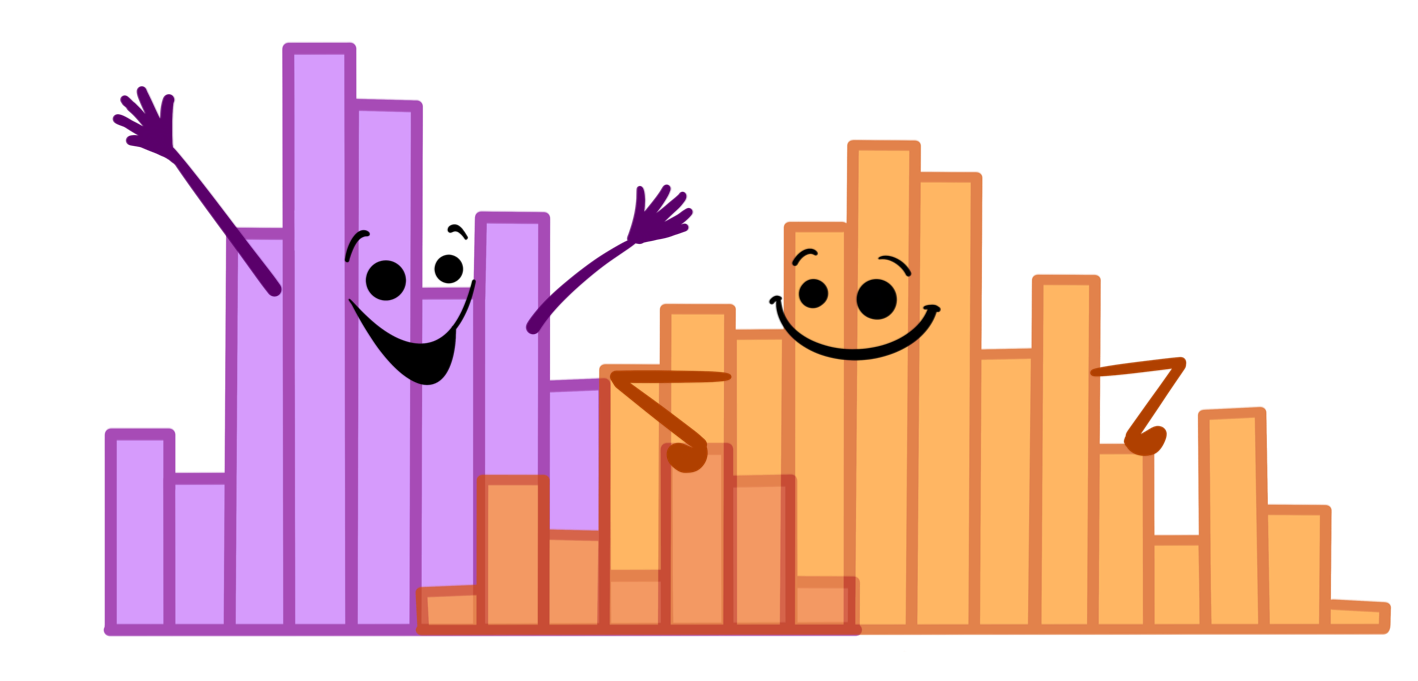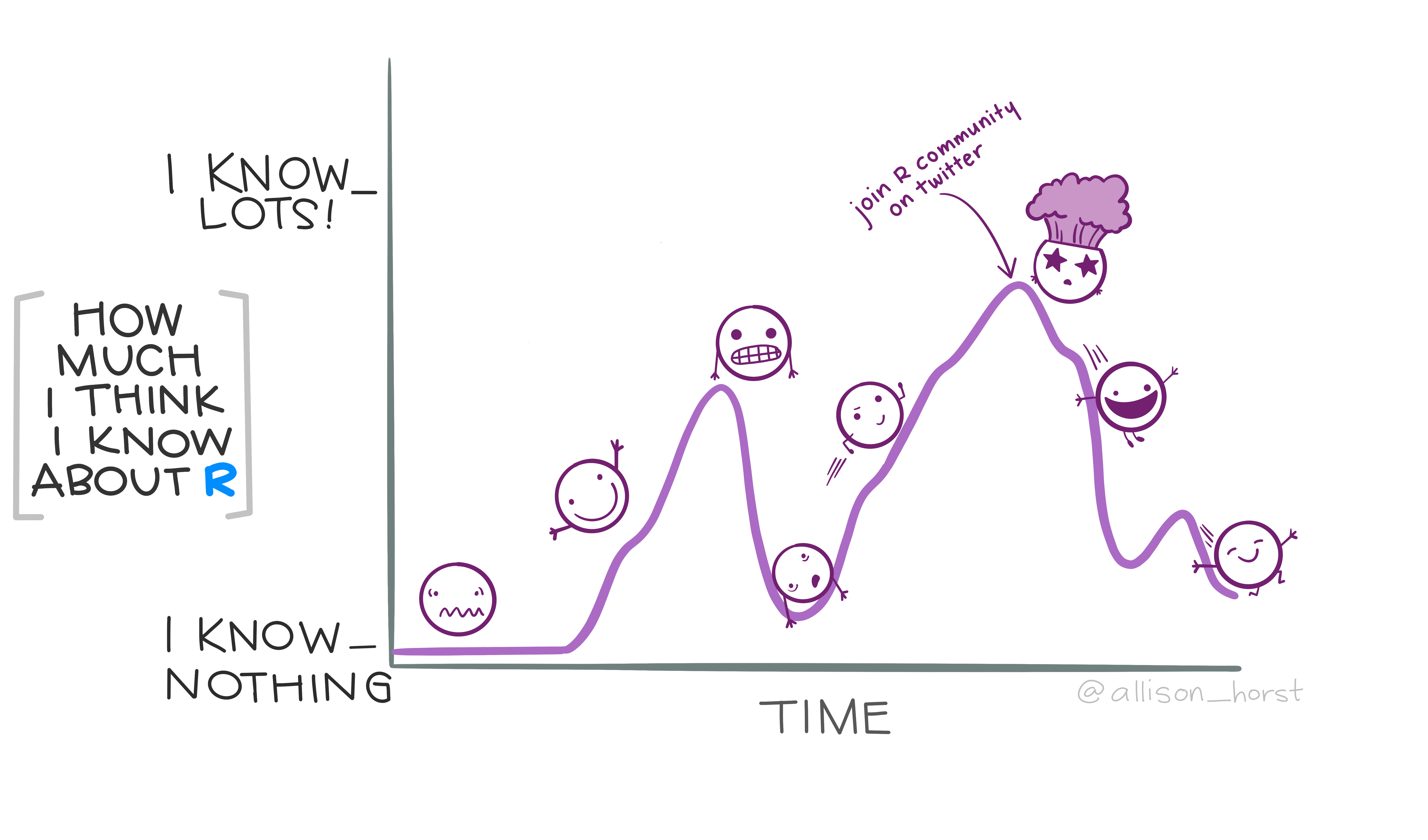Data Visualization Workshop
DataFEWSion Graduate Traineeship
Anabelle Laurent
February 20, 2023
My background
2012: Received my Master's degree in Agronomy/ Agroecology (France)
2013-2016: Conducted research projects about energy crops at INRAE (France)
2017-2020: PhD at ISU in Crop Production & Physiology - Deparment of Agronomy
2021-2022: Postdoc at ISU - Department of Agronomy
2023 to current: Research Scientist at Corteva (Johnston, IA) in the Biostatistics Team
Let's talk: why is Data Visualization important? 🤔
Why is Data Visualization important?
Universal way to communicate information
Provides clear and effective message
Find patterns, trends, spot extreme values
Make data memorable
Maintain the audience's interest
Let's talk: Who is your audience? Which support are you using? 🤔
Who is your audience?
- scientist 🥼
- students 👨🎓
- industry
- general audience
Which support?
- peer-reviewed paper 🗞
- oral presentations 💬
- website, blog, etc.
What make a good visualization? 😄
What make a good visualization?
Reveals a trend or relationship between variables
Always have at minimum a caption, axis, scales and symbols
Distinct and legible symbols (i.e., use contrast)
Caption should convey as much information as possible
No noise: keep information at minimum
the correct graph type based on the kind of data to be presented
Disclaimer
This workshop does not provide code but all the plots were made using R Studio (see last slides for more details)
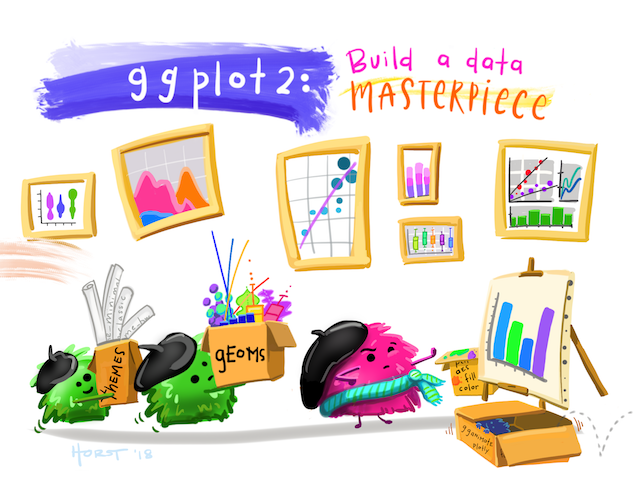
Visualizing quantity
Visualizing quantity : bar plot

Visualizing quantity : bar plot

What's wrong with this plot?
Visualizing quantity : bar plot

- Avoid abbreviations
- Precise axis title + unit
- Make it more attractive
Visualizing quantity : bar plot

Visualizing quantity : bar plot

For long x-axis labels, flip the the axis
Visualizing quantity: bar plot

Order the categories by ascending or descending values
Keep categories naturally ordered like age group
For long labels: flip the axis
Visualizing quantity : grouped bar plot

Useful to draw bars within each group according to another other categorical variable
What's wrong with this plot?

What's wrong with this plot?

- bars are too long
- Can be impractical sometimes
Don't do that! 🙅

Don't do that! 🙅

- Bars charts start at zero. Indeed, the bar length is proportional to the amount displayed.
- dot plot is a better option
Visualizing quantity: dot plot

Visualizing quantity: dot plot

Visualizing quantity: dot plot

Bars charts or dot plot: the order matters
Here, you don't deliver a clear message
Visualizing quantity : lollipop plot

Database: On-time data for all flights that departed NYC
Lollipop plots are an alternative for simple barchart
Visualizing distribution : histograms

Histogram are useful for plotting the distribution of a single quantitative variable
Visualizing distribution : histograms

Try different bin widths for best visual appearance.
Small bin width -> peaky and busy histogram
Large bin width -> features might disappear
Visualizing distribution : density plot

Visualizing distribution : density plot

Try different bandwidths for best visual appearance
Small bandwidth -> peaky and busy density
Large bandwidth -> smooth feature and might look like a gaussian
Visualizing multiple distributions

Visualizing multiple distributions

The peaks of the density plot are where there is the highest concentration of points
For several distributions, density plots work better than histograms.
Visualizing multiple distributions

Visualizing multiple distributions: ridgeline plot

Visualizing multiple distributions: ridgeline plot

Ridgeline plot shows the distribution of a numeric value for several groups (at least 5-6 groups) or when they overlap each other.
Visualizing distributions: boxplot
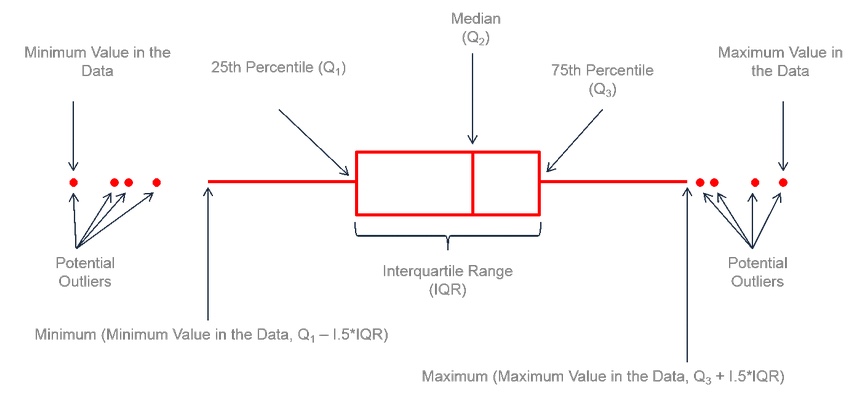
A boxplot can summarize the distribution of a numeric variable for several groups
Visualizing distributions: boxplot

Boxplot does not tell about the number of observations.
Visualizing distributions: boxplot with jitter

Boxplots with jitter tell about:
the distribution of the data
if the groups are balanced or unbalanced in terms of observations.
Visualizing distributions: boxplot with jitter

No overlapping facilitates the visual appearence of the plot
Visualizing distributions: violin plot

Violins are equivalent to density estimate
They are useful to represent bimodal data.
Your turn 👨💻
Create one visual using one of these types of graphics:
bar chart
histograms
density plot
boxplot
violin plot
Your turn 👩💻
Choose the dataset of your choices:
- Nutritional and marketing information on US Cereals
- Diamonds
Your turn 👩💻
Choose the dataset of your choices:
- Nutritional and marketing information on US Cereals
- Diamonds Choose the dataset of your choices
| mfr | calories | protein | fat | sugars | shelf | |
|---|---|---|---|---|---|---|
| 100% Bran | N | 212.1 | 12.1 | 3 | 18.2 | 3 |
| All-Bran | K | 212.1 | 12.1 | 3 | 15.2 | 3 |
| All-Bran with Extra Fiber | K | 100.0 | 8.0 | 0 | 0.0 | 3 |
## 'data.frame': 65 obs. of 11 variables:## $ mfr : Factor w/ 6 levels "G","K","N","P",..: 3 2 2 1 2 1 6 4 5 1 ...## $ calories : num 212 212 100 147 110 ...## $ protein : num 12.12 12.12 8 2.67 2 ...## $ fat : num 3.03 3.03 0 2.67 0 ...## $ sodium : num 394 788 280 240 125 ...## $ fibre : num 30.3 27.3 28 2 1 ...## $ carbo : num 15.2 21.2 16 14 11 ...## $ sugars : num 18.2 15.2 0 13.3 14 ...## $ shelf : int 3 3 3 1 2 3 1 3 2 1 ...## $ potassium: num 848.5 969.7 660 93.3 30 ...## $ vitamins : Factor w/ 3 levels "100%","enriched",..: 2 2 2 2 2 2 2 2 2 2 ...Your turn 👨💻
Choose the dataset of your choices
| carat | cut | color | clarity | depth | table | price | x | y | z |
|---|---|---|---|---|---|---|---|---|---|
| 0.2 | Ideal | E | SI2 | 61.5 | 55 | 326 | 4.0 | 4.0 | 2.4 |
| 0.2 | Premium | E | SI1 | 59.8 | 61 | 326 | 3.9 | 3.8 | 2.3 |
| 0.2 | Good | E | VS1 | 56.9 | 65 | 327 | 4.0 | 4.1 | 2.3 |
## tibble [53,940 × 10] (S3: tbl_df/tbl/data.frame)## $ carat : num [1:53940] 0.23 0.21 0.23 0.29 0.31 0.24 0.24 0.26 0.22 0.23 ...## $ cut : Ord.factor w/ 5 levels "Fair"<"Good"<..: 5 4 2 4 2 3 3 3 1 3 ...## $ color : Ord.factor w/ 7 levels "D"<"E"<"F"<"G"<..: 2 2 2 6 7 7 6 5 2 5 ...## $ clarity: Ord.factor w/ 8 levels "I1"<"SI2"<"SI1"<..: 2 3 5 4 2 6 7 3 4 5 ...## $ depth : num [1:53940] 61.5 59.8 56.9 62.4 63.3 62.8 62.3 61.9 65.1 59.4 ...## $ table : num [1:53940] 55 61 65 58 58 57 57 55 61 61 ...## $ price : int [1:53940] 326 326 327 334 335 336 336 337 337 338 ...## $ x : num [1:53940] 3.95 3.89 4.05 4.2 4.34 3.94 3.95 4.07 3.87 4 ...## $ y : num [1:53940] 3.98 3.84 4.07 4.23 4.35 3.96 3.98 4.11 3.78 4.05 ...## $ z : num [1:53940] 2.43 2.31 2.31 2.63 2.75 2.48 2.47 2.53 2.49 2.39 ...Your turn 👩💻
install.packages("esquisse")library(esquisse)library(MASS)library(ggplot2)?UScereal # more details about the datasetesquisse::esquisser(UScereal,viewer="browser")?diamonds # more details about the datasetesquisse::esquisser(diamonds,viewer="browser")Visualizing associations among quantitative variables
Relationship between 2 numeric variables: scatterplot

Relationship between 2 numeric variables: scatterplot + linear fit

Relationship between 2 numeric variables: scatterplot + quadratic fit

⚠️ Linear fit is widely used but it is not always the best fit, try quadratic fit too.
Relationship between 2 numeric variables: scatterplot

Multi-panel plots

Split a single plot using one variable with many levels
Multi-panel plots

Split a single plot using the combinations of two discrete variables.
Multi-panel plots

⚠️ different scales can lead to misinterpretation
Bubble plot
A bublle plot is a scatterplot with 3 numerical variables

Hexagonal heatmap
It counts the number of cases in each hexagon. Useful for large dataset or avoid overplotting.

Computationally more efficient than plotting individual data points for very large dataset.
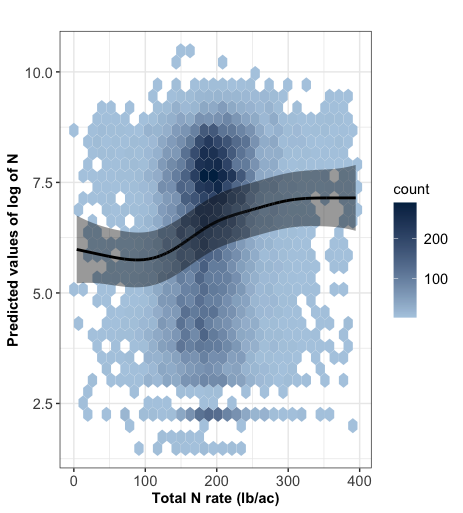
Your turn 👨💻
Create one visual using scatter plot or bubble plot
Use a data set from TidyTuesday
Your turn 👨💻
| species | island | bill_length_mm | bill_depth_mm | flipper_length_mm |
|---|---|---|---|---|
| Adelie | Torgersen | 39.1 | 18.7 | 181 |
| Adelie | Torgersen | 39.5 | 17.4 | 186 |
| Adelie | Torgersen | 40.3 | 18.0 | 195 |
| Adelie | Torgersen | NA | NA | NA |
| Adelie | Torgersen | 36.7 | 19.3 | 193 |
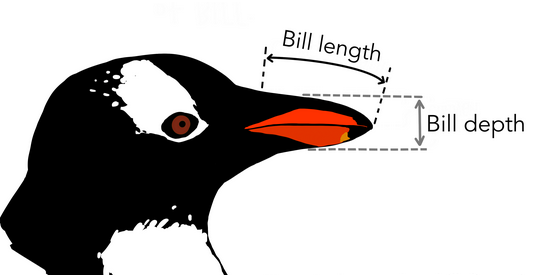
Your turn 👩💻
| species | island | body_mass_g | sex | year |
|---|---|---|---|---|
| Adelie | Torgersen | 3750 | male | 2007 |
| Adelie | Torgersen | 3800 | female | 2007 |
| Adelie | Torgersen | 3250 | female | 2007 |
| Adelie | Torgersen | NA | NA | 2007 |
| Adelie | Torgersen | 3450 | female | 2007 |
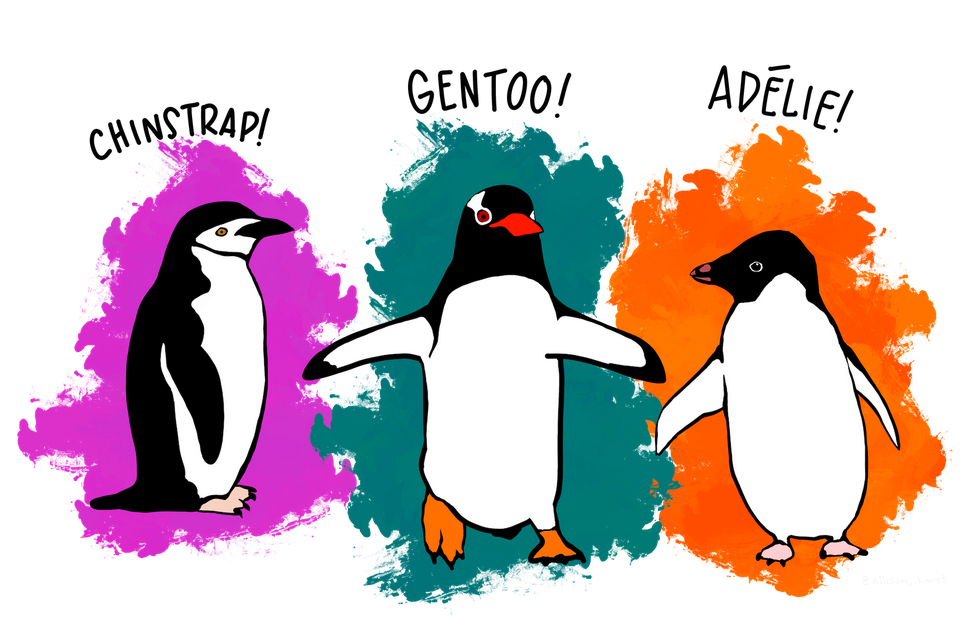
Your turn 👩💻
penguins <- readr::read_csv('https://raw.githubusercontent.com/rfordatascience/tidytuesday/master/data/2020/2020-07-28/penguins.csv')esquisse::esquisser(penguins,viewer="browser")🐧See this link for more details about the penguins dataset
Visualizing time series
Visualizing time series
Example with a NASA dataset: atmospheric measurements across a grid of locations in Central America (Murrell, 2010)
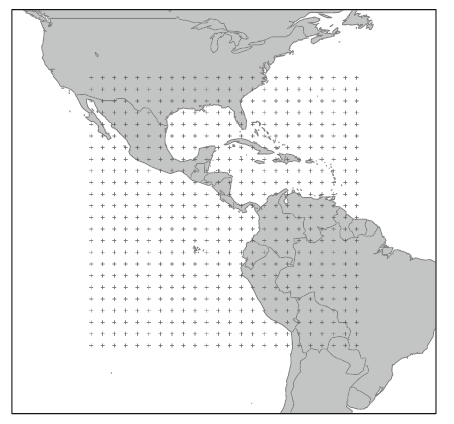
Visualizing time series
Overview of the data
## time y x lat long date cloudhigh cloudlow cloudmid ozone## 1 1 1 1 -21.2 -113.8000 1995-01-01 0.5 31.0 2.0 260## 2 1 1 2 -21.2 -111.2957 1995-01-01 1.5 31.5 2.5 260## 3 1 1 3 -21.2 -108.7913 1995-01-01 1.5 32.5 3.5 260## 4 1 1 4 -21.2 -106.2870 1995-01-01 1.0 39.0 4.0 258## 5 1 1 5 -21.2 -103.7826 1995-01-01 0.5 48.0 4.5 258## 6 1 1 6 -21.2 -101.2783 1995-01-01 0.0 50.0 2.5 258## pressure surftemp temperature id day month year## 1 1000 297.4 296.9 1-1 0 1 1995## 2 1000 297.4 296.5 2-1 0 1 1995## 3 1000 297.4 296.0 3-1 0 1 1995## 4 1000 296.9 296.5 4-1 0 1 1995## 5 1000 296.5 295.5 5-1 0 1 1995## 6 1000 296.5 295.0 6-1 0 1 1995Visualizing time series
Let's pick one location (x=1 & y=1) and focus on surface temperature (Kelvin)
## time x y surftemp day month year## 1 1 1 1 297.4 0 1 1995## 2 2 1 1 298.7 31 2 1995## 3 3 1 1 298.3 59 3 1995## 4 4 1 1 298.7 90 4 1995## 5 5 1 1 298.3 120 5 1995## 6 6 1 1 295.0 151 6 1995Visualizing time series
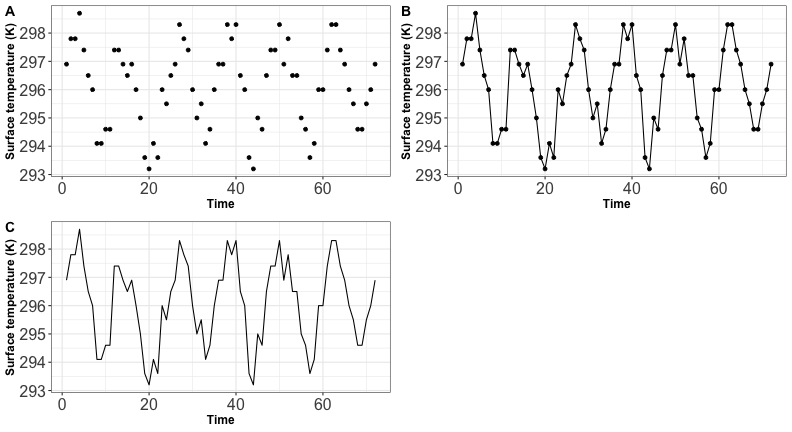
- Without the dots you emphasize on the general trend and not on the individual observation
- A plot with line + dots is called a line graph
Visualizing time series
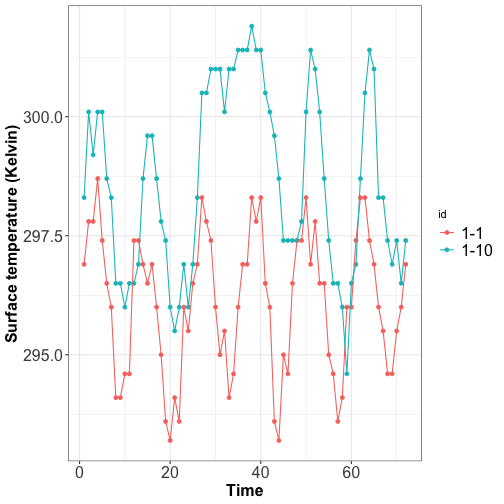
Display change between two time periods: dummbbell chart
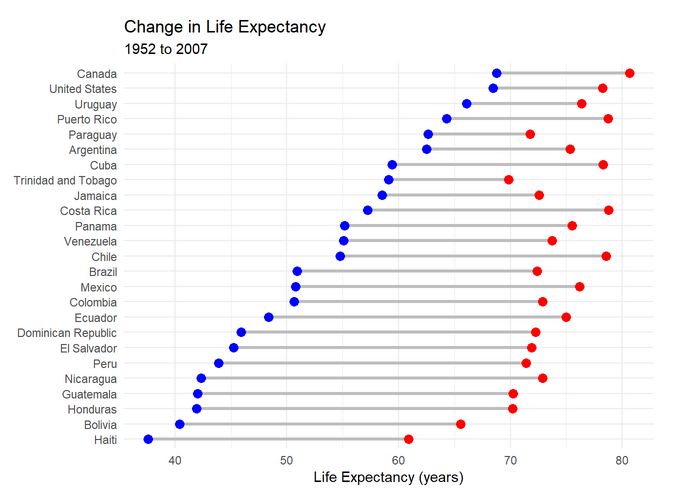
Source: Rob Kabacoff (2020)
Aesthetics: Color, Shape, Opcacity
Color to distinguish
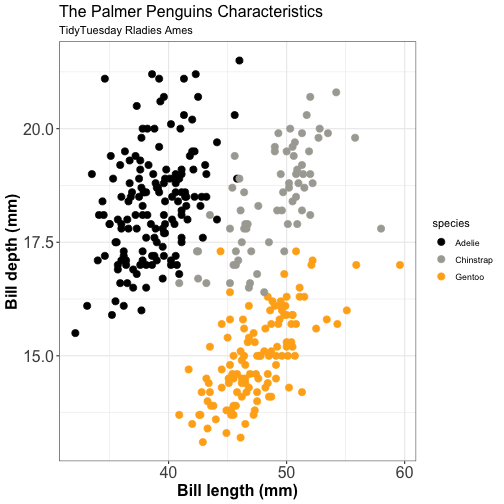
🐧
Color to highlight
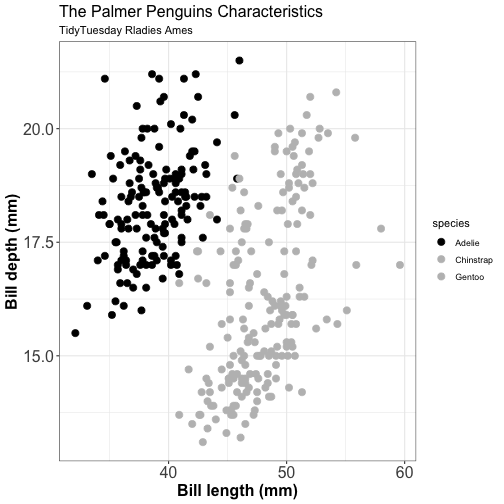
Something wrong?🤷
Color & shape to highlight
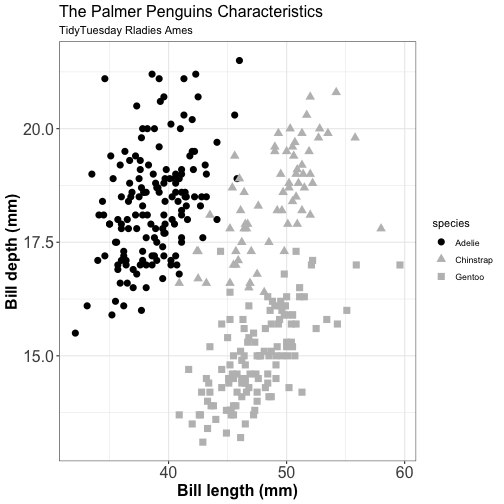
Alternative 1
Color & shape to highlight
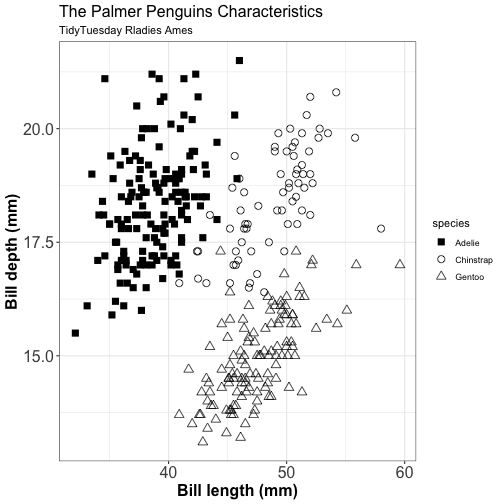
Alternative 2
Opacity
Spatial distribution of drug related crimes in Chalottesville
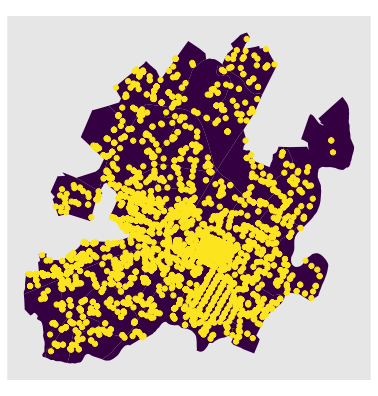
You can miss the interpretation of your graphic if the opacity is not set correctly
Opacity
Spatial distribution of drug related crimes in Chalottesville
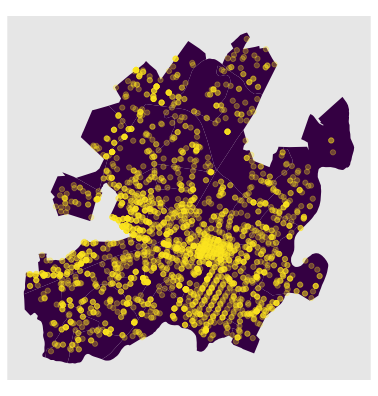
Control the opacity to avoid overlapping and provide shading
Tell a story with your data 📖
Tell a story with your data
Before data visualizatio, you must:
Know your audience
Know the level of data detail expected
Give enough context
Ask yourself: What do I want my audience know/remember with the data I am presenting?
Tell a story with your data
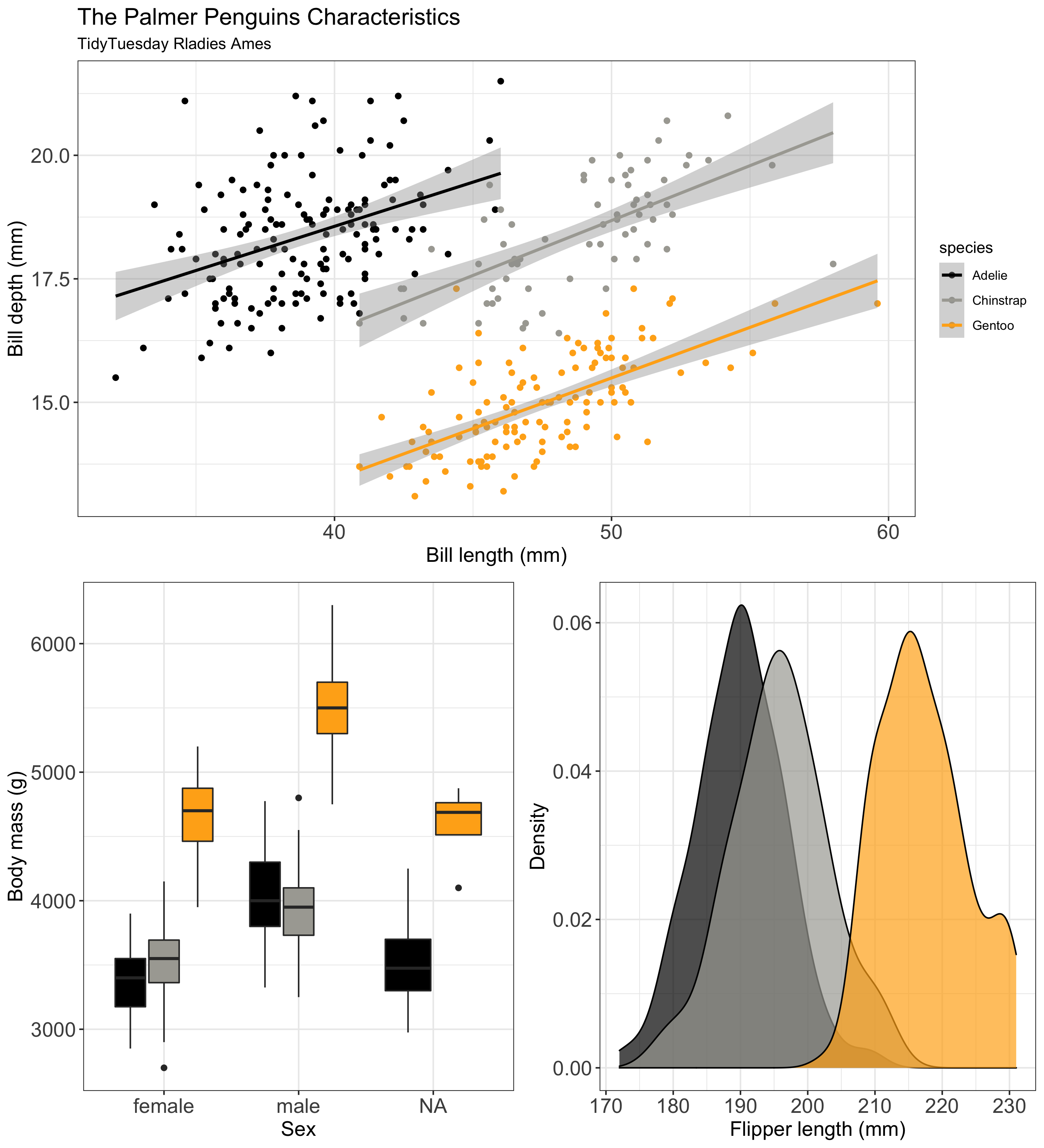
Don't be repetitive but be consistent (theme, color scheme, font size etc.)
Tell a story with your data
Guide your audience by point out specific values
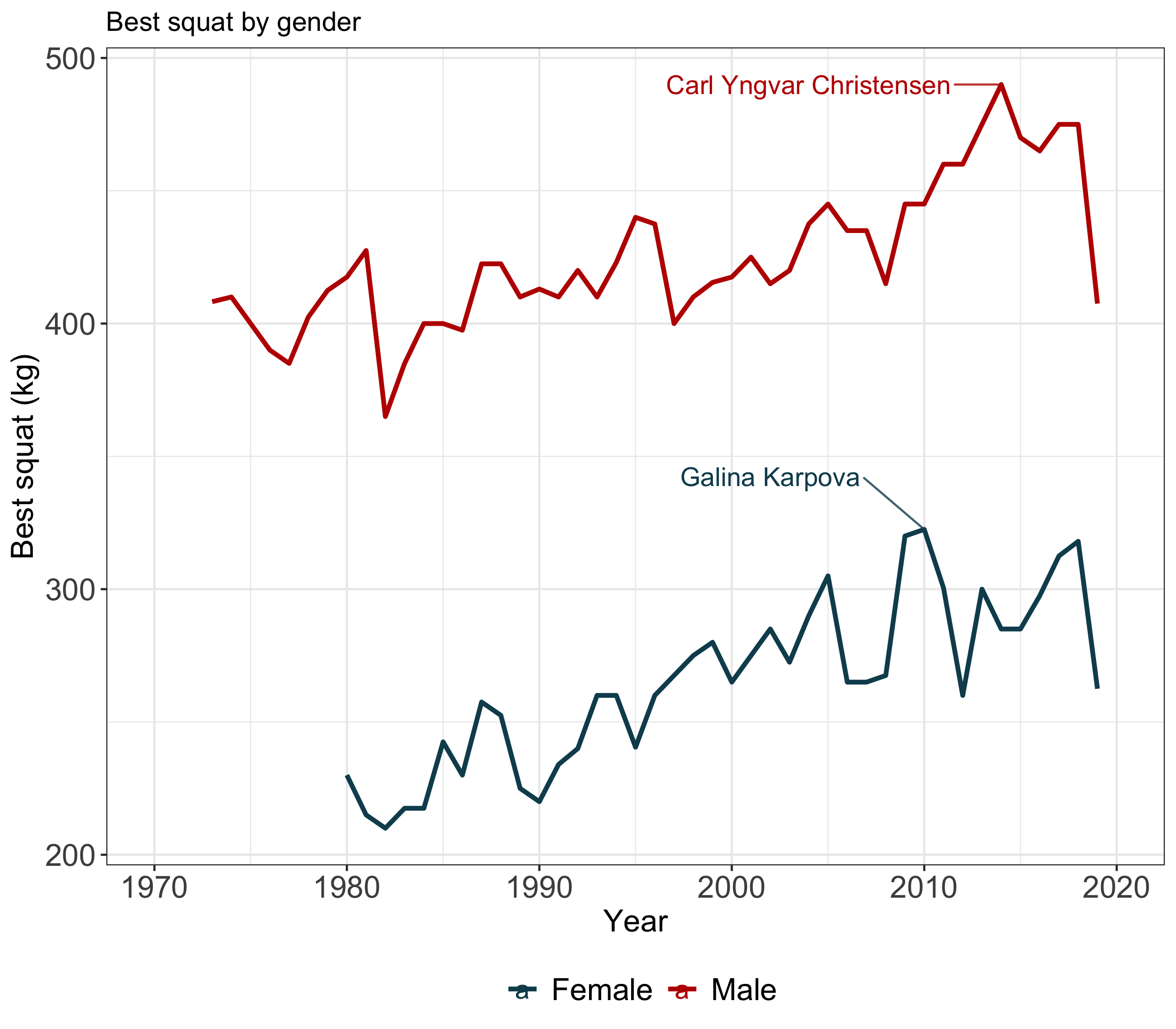
Tell a story with your data
Guide your audience by pointing out specific values
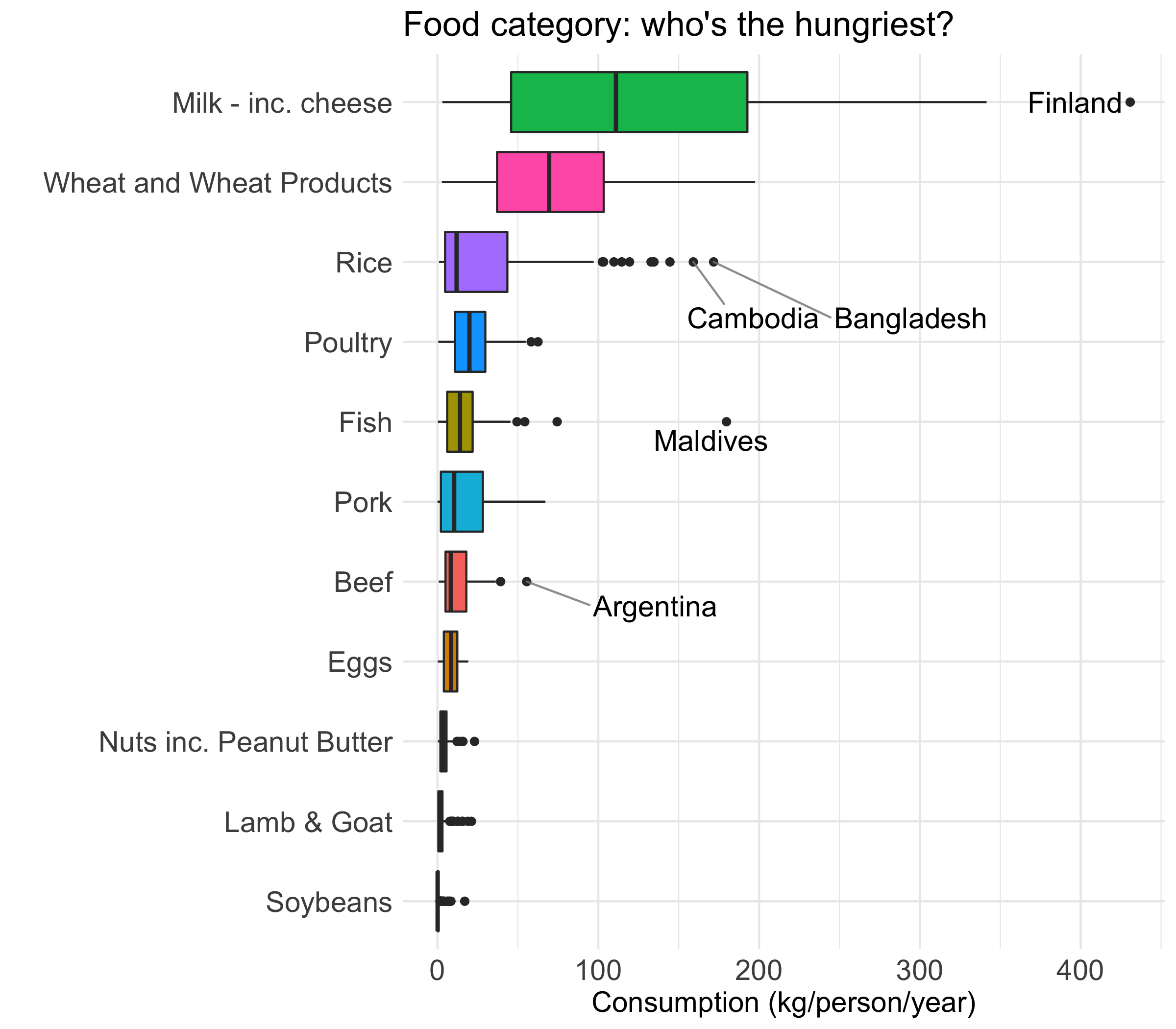
Tell a story with your data
Customize your plot using highlighting
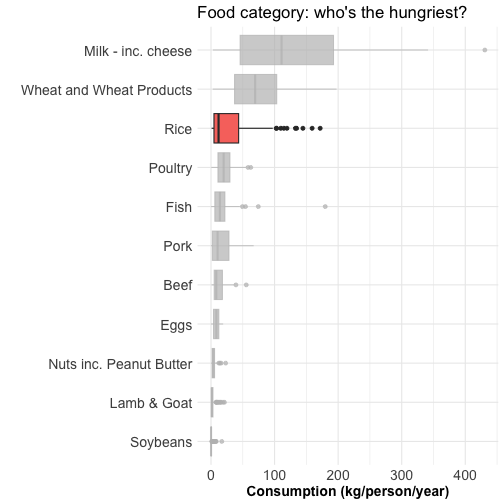
Tell a story with your data
Customize your plot using highlighting + text
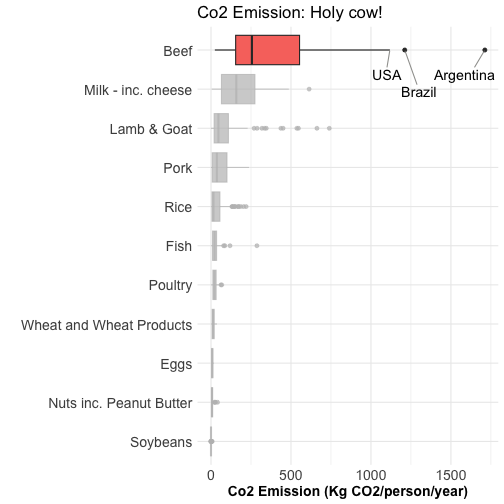
Interactive time-series with dygraphs
Lung deaths in UK
Your turn 👩💻
library(dygraphs)lungDeaths <- cbind(ldeaths, mdeaths, fdeaths)# Ex 1: highlighting persist even after the mouse leaves the graph area.dygraph(lungDeaths, main = "Deaths from Lung Disease (UK)") %>% dyHighlight(highlightCircleSize = 5, highlightSeriesBackgroundAlpha = 0.2, hideOnMouseOut = FALSE) # Ex 2: stroke width of highlighted seriesdygraph(lungDeaths, main = "Deaths from Lung Disease (UK)") %>% dyHighlight(highlightSeriesOpts = list(strokeWidth = 3))Your turn 👨💻
library(dygraphs)lungDeaths <- cbind(ldeaths, mdeaths, fdeaths)# Ex 3: fill in the area underneath the seriesdygraph(ldeaths, main = "Deaths from Lung Disease (UK)") %>% dyOptions(fillGraph = TRUE, fillAlpha = 0.4) # Ex 4: display of the individual points in a seriesdygraph(ldeaths, main = "Deaths from Lung Disease (UK)") %>% dyOptions(drawPoints = TRUE, pointSize = 2)Data visulization using interactive web-app
First example: ISOFAST web-app
Second example: ONFANT web-app
Your turn! 👩💻
Create a prototype user interface for a Shiny app Goal: get familiar with R Shiny BUT then level up with R Studio tutorials
install.packages("designer")library(designer)designer::designApp()Check this website for more information.
R library used for this presentation
library(dygraphs)library(gapminder)library(gghighlight)library(ggplot2)library(ggrepel)library(dplyr)library(plotly)library(tidyr)Ressources to go deeper into Data Viz
Website for R colors and palettes
Marie Döbler & Tim Großmann's book Available online with ISU Library
Check the hashtag #tidytuesday on twitter if you are looking for inspiration & R code.
Thank you for your attention
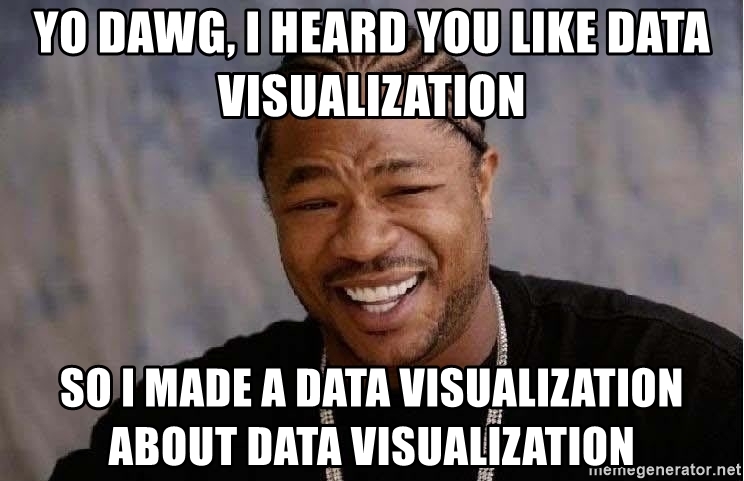
✉️ my email: alaurent@iastate.edu
Slides created via the R package xaringan.
